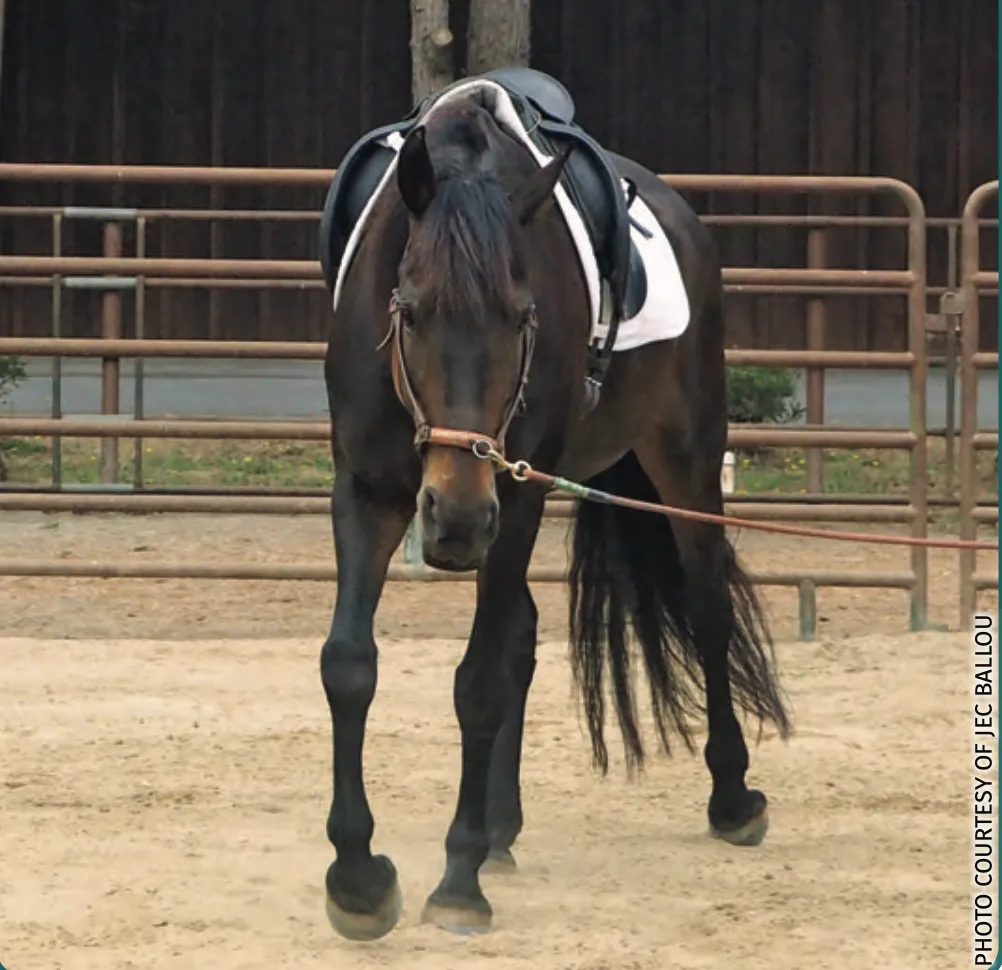
Designing a Fitness Plan That Actually Works for Your Horse
Smarter, Not Harder: Designing a Fitness Plan That Actually Works for Your Horse
By Jec A. Ballou
When it comes to conditioning, no two horses are the same—and that’s exactly the point.
Fitness isn’t just about increasing workload or riding longer. In fact, applying a generic “more is better” approach can often stall a horse’s progress or lead to setbacks. True conditioning must be tailored to a horse’s unique challenges—both in terms of their physical body and their mental state.
Let’s take Dean, for example.
Dean is a six-year-old Quarter Horse who came to me after a successful rehab from a bilateral meniscus tear, a common source of stifle lameness. By the time I was brought in, he had already spent months in hand-walking and was walking and trotting under saddle for 30 minutes. He had a decent foundation, but he wasn’t yet fit—and we had to make sure he didn’t regress or get reinjured while building back up.
That’s where the nuance begins.
The Gray Zone: Not Rehab, Not Full Fitness
Some horses fall into a tricky in-between phase. They’ve healed, they’re mobile, but they still carry physical imbalances that could be ticking time bombs if left unaddressed. Dean was one of those. He needed:
Strengthening for long-term resilience
Movement corrections for mechanics that caused issues in the first place
Aerobic development that didn’t overdo it
What we didn’t want was a plan that focused only on gentle therapy and never pushed progress—or one that jumped straight into intense workouts without correcting muscle patterns.
What I Saw in Dean
Watching videos of him move, Dean had a long, elegant stride—but it came at a cost. His front end covered ground quickly, but his hind legs often lagged behind. This trailing tendency puts stress on the stifles and hocks. It’s a pattern that can become even more entrenched as the horse becomes fitter—unless you interrupt it and rebuild movement from the inside out.
One of the first things we did was rule out contributing factors like hoof imbalance (long toes can mimic this same pattern). Then we got to work on exercises that would:
Activate his deep core and back muscles
Encourage hind-end engagement
Reduce tension in overused muscle groups
The Foundation: Corrective Exercises
Before every ride, Dean’s daily warm-up included a set of simple but powerful groundwork exercises:
✅ Pelvic Tucks – like equine sit-ups, these activate the core and stretch the lumbar spine
✅ Gluteal Massage – using a small ball to release tightness and improve blood flow
✅ Backup Variation – moving one diagonal pair of legs while the others remain still to train balance and awareness
✅ Pre-Ride Circles – small circles with a lowered neck to unlock the spine and establish rhythm
✅ Wiggle for Tension Release – gentle side-to-side head motion to trigger full-body release
These aren’t flashy. They don’t require fancy equipment. But they deliver lasting change.

Figure 1 – Releasing tension from the gluteals with a massage tool is a simple way to support relaxation and blood flow.

Figure 2 – Pelvic Tucks activate the horse’s core and stretch the lumbar spine—think of it like an equine sit-up.

Figure 3 – Backup Variation trains body control and balance, one diagonal at a time.

Figure 4 – Pre-Ride Circles help loosen the spine and establish bend before any trot or canter work.

Figure 5 – A gentle wiggle of the horse’s head can create a full-body release when done correctly.
Conditioning with Intention: Week 3 Sample
By Week 3, Dean’s plan included short periods of canter, carefully timed rest, and creative patterns to build both strength and mental focus. Here’s what one of his rides looked like:
🔹 10-minute walk on loose reins
🔹 The Labyrinth: three minutes of spatial awareness work
🔹 The Schaukel: eight smooth back-and-forth repetitions
🔹 Clockface Trot Poles: maintaining even rhythm through poles laid at 12, 3, 6, and 9 on a circle
🔹 Canter for 30 seconds, walk for 20 seconds – repeat 4 times
🔹 Hack outside to finish the 35-minute session
Every component was there for a reason. No random drills. No mindless laps. Just smart, targeted work built on the horse’s current capacity.

Figure 6 – The Labyrinth improves spatial awareness and supports joint mobility.
Figure 7 – The Schaukel is a rhythmic movement to build control and strength without stress.

Figure 8 – Use ground poles at 12, 3, 6, and 9 o’clock to test rhythm and stride consistency in a trot.
The Real Key? Structure and Consistency
Many riders misinterpret their horse’s enthusiasm—either pushing too hard too soon or staying too cautious for too long. That’s why structure matters. It takes the guesswork out of decision-making and allows the horse’s body to adapt in a steady, sustainable way.
Progress doesn’t come from intensity—it comes from consistency. And consistency only works if the plan respects the horse’s reality: their movement patterns, schedule, and access to varied terrain.
Bottom Line
If your horse is coming back from injury, in a performance plateau, or just inconsistent in fitness, remember:
🎯 A smart plan doesn’t need to be complicated.
💡 It just needs to be specific, repeatable, and designed with their actual body in mind.
Want more exercises like the ones in Dean’s plan? Many of them are featured in my book 55 Corrective Exercises for Horses—a go-to resource for anyone looking to build long-lasting strength, symmetry, and soundness.
About Jec:
Jec A. Ballou is the author of multiple books on equine fitness and biomechanics. She specializes in designing accessible, practical conditioning plans rooted in classical training and modern bodywork techniques.